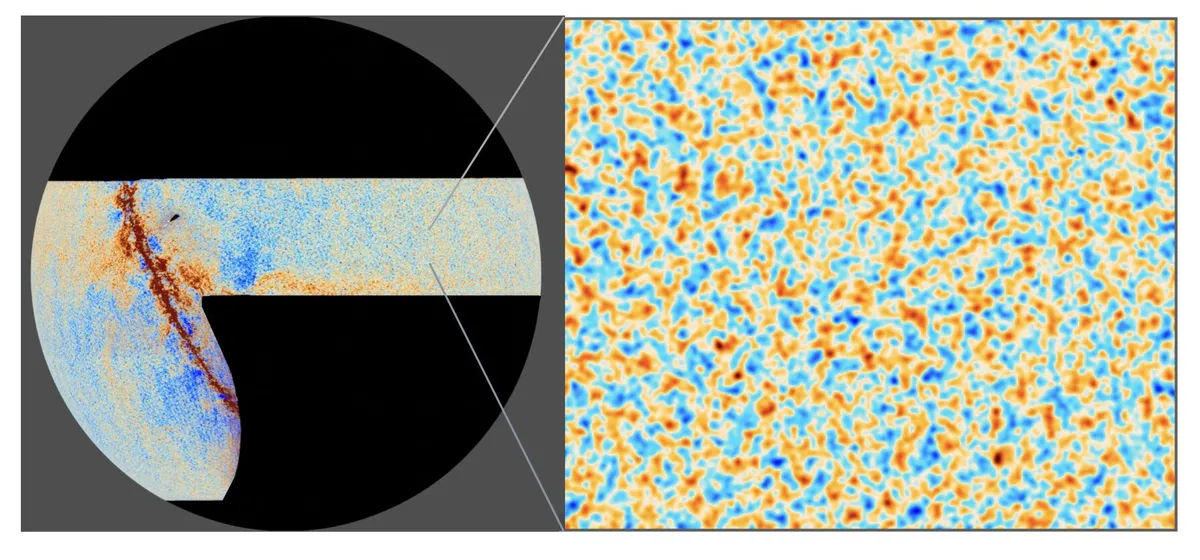
Recent research conducted by the Atacama Cosmology Telescope (ACT) collaboration has delivered the most detailed images to date of the universe's early moments—a remarkable glimpse into cosmic history that is now accessible to humanity. By measuring the light that has traveled over 13 billion years to reach a telescope nestled high in the Chilean Andes, these new images showcase the universe when it was merely 380,000 years old. This is akin to viewing the first hours of a newborn's life, offering a profound insight into the early cosmos.
According to Suzanne Staggs, the director of ACT and Henry deWolf Smyth Professor of Physics at Princeton University, "We are seeing the first steps towards making the earliest stars and galaxies." Importantly, the images produced by ACT reveal not just light and dark but also the polarization of light in high resolution. This capability is a significant advancement, distinguishing ACT from earlier telescopes like Planck. The images of the cosmic microwave background (CMB) radiation now exhibit five times the resolution of those captured by Planck, along with enhanced sensitivity, as noted by Sigurd Naess, a researcher at the University of Oslo and lead author for one of several related papers.
The newly obtained polarization images demonstrate the intricate movements of hydrogen and helium gas during the universe's infancy. Staggs elaborates, "Before, we got to see where things were, and now we also see how they're moving." Similar to how we can infer the presence of the moon by observing tides, the movements tracked by light polarization provide insights into the gravitational forces acting on various regions of space. This research confirms a straightforward model of the universe while dismissing numerous competing theories.
In the first few hundred thousand years following the Big Bang, the universe was filled with a hot primordial plasma that made it effectively opaque, preventing light from traveling freely. The CMB signifies the first observable stage in the universe's history—essentially, its "baby picture." The latest images reveal remarkably subtle variations in the density and velocity of gases that permeated the young universe. Naess points out that while other contemporary telescopes measure polarization with minimal noise, none cover as extensive an area of the sky as ACT.
The hazy patterns seen in the light's intensity represent regions of varying density within a vast sea of hydrogen and helium, akin to hills and valleys extending across millions of light-years. Over billions of years, gravity has caused the denser regions to collapse, leading to the formation of stars and galaxies. These detailed images are instrumental in addressing long-standing questions regarding the origins of the universe. Jo Dunkley, the Joseph Henry Professor of Physics and Astrophysical Sciences at Princeton University, states, "By looking back to that time when things were much simpler, we can piece together the story of how our universe evolved to the rich and complex place we find ourselves in today."
The ACT team has determined that the observable universe extends nearly 50 billion light-years in all directions, containing a mass equivalent to 1,900 zetta-suns (or nearly 2 trillion trillion suns). Of this total mass, only 100 zetta-suns are made up of normal matter—the type we can detect and measure—while around 500 zetta-suns consist of enigmatic dark matter, and approximately 1,300 zetta-suns are attributed to vacuum energy, also known as dark energy. Thibaut Louis, a CNRS researcher at IJCLab, University Paris-Saclay, highlights that almost all helium in the universe was produced within the first three minutes of cosmic time, and ACT's new measurements align closely with theoretical predictions and observations in galaxies.
In recent years, cosmologists have faced disagreements regarding the Hubble constant, which indicates the current rate of space expansion. Measurements derived from the CMB have consistently shown an expansion rate of 67 to 68 kilometers per second per megaparsec, while those from nearby galaxies suggest a value between 73 to 74 km/s/Mpc. Utilizing their newly released data, the ACT team has refined the measurement of the Hubble constant with enhanced precision, which aligns with previous CMB-derived estimates.
One of the primary objectives of this research was to investigate alternative cosmological models that could explain the discrepancies in expansion rates. Colin Hill, an assistant professor at Columbia University and one of the lead authors, mentioned that they explored various modifications to neutrino behavior, dark matter interactions, and even fundamental constants of nature. However, the ACT data showed no signs of new signals, affirming the robustness of the standard cosmological model.
The faint background radiation measured by ACT required a dedicated five-year exposure with a highly sensitive telescope designed to detect millimeter-wavelength light. According to Mark Devlin, the Reese W. Flower Professor of Astronomy at the University of Pennsylvania and ACT's deputy director, "Our colleagues at the National Institute of Standards and Technology provided detectors with cutting-edge sensitivity, and the National Science Foundation has supported ACT's mission for over two decades." The ACT telescope has also observed light from various cosmic objects, allowing researchers to peer deep into cosmic history, from our own Milky Way to distant galaxies and massive black holes.